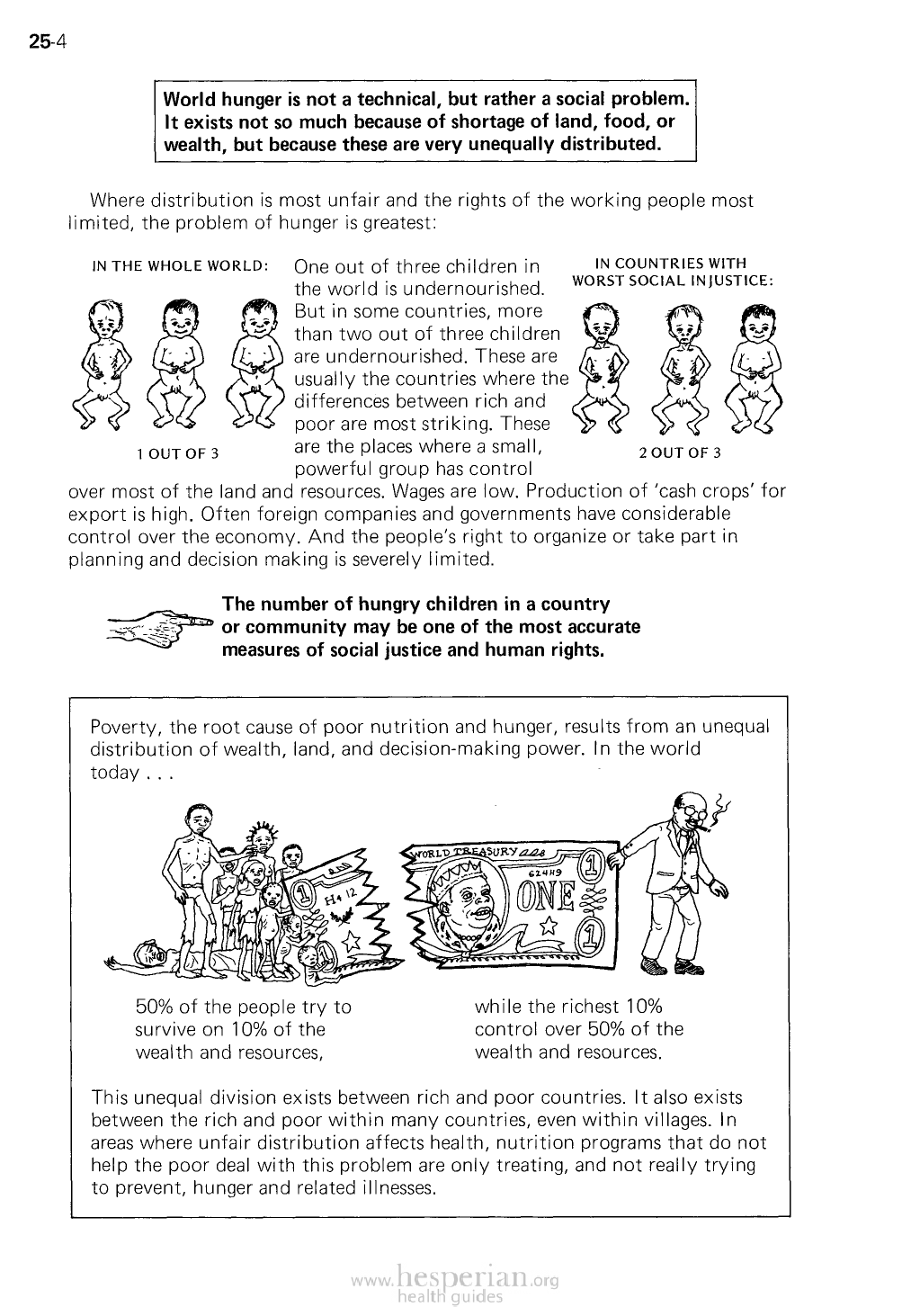
25-4
World hunger is not a technical, but rather a social problem.
It exists not so much because of shortage of land, food, or
wealth, but because these are very unequally distributed.
Where distribution is most unfair and the rights of the working people most
limited, the problem of hunger is greatest:
IN THE WHOLE WORLD: One out of three children in
the world is undernourished.
IN COUNTRIES WITH
WORST SOCIAL INJUSTICE:
But in some countries, more
than two out of three children
are undernourished. These are
usually the countries where the
differences between rich and
poor are most striking. These
1 OUT OF 3
are the places where a small,
powerful group has control over
2 OUT OF 3
most of the land and resources. Wages are low. Production of ‘cash crops’ for
export is high. Often foreign companies and governments have considerable control
over the economy. And the people’s right to organize or take part in planning and
decision making is severely limited.
The number of hungry children in a country or
community may be one of the most accurate
measures of social justice and human rights.
Poverty, the root cause of poor nutrition and hunger, results from an unequal
distribution of wealth, land, and decision-making power. In the world
today . . .
50% of the people try to
survive on 10% of the
wealth and resources.
while the richest 10%
control over 50% of the
wealth and resources.
This unequal division exists between rich and poor countries. It also exists
between the rich and poor within many countries, even within villages. In areas
where unfair distribution affects health, nutrition programs that do not help the
poor deal with this problem are only treating, and not really trying to prevent,
hunger and related illnesses.